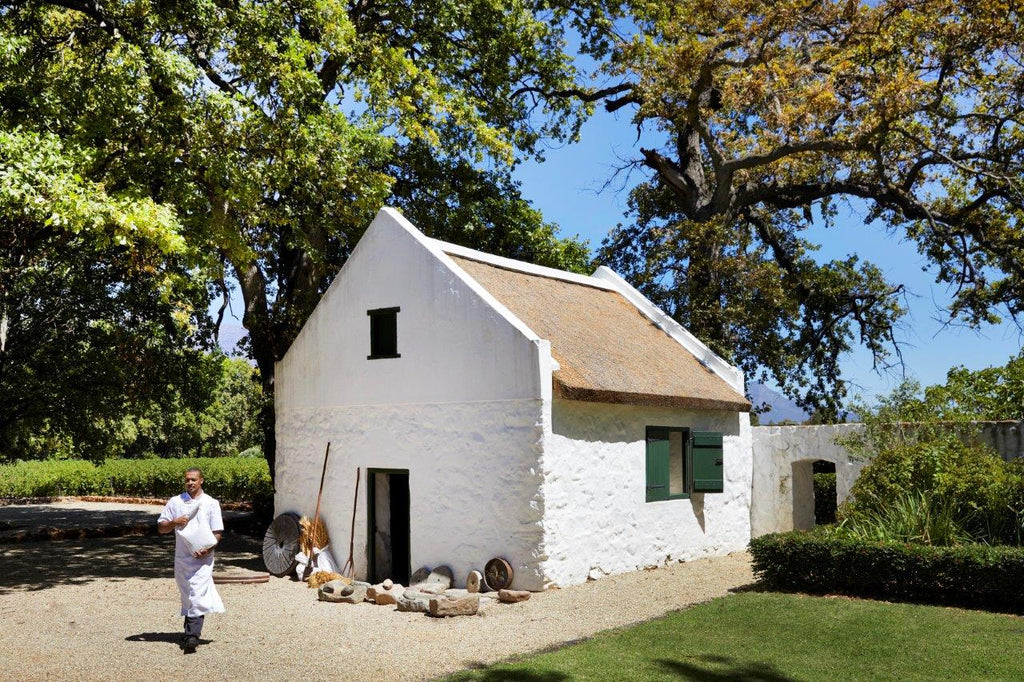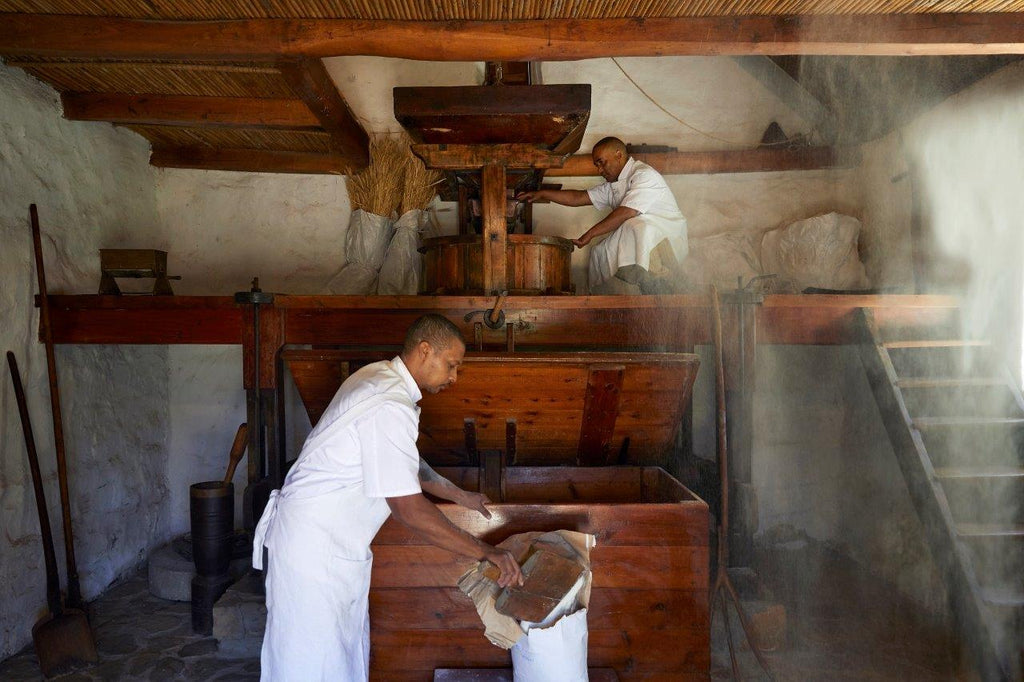Watermills at work
Watermills were the first production machinery which made use of a natural and renewable energy source. For some 18 centuries, watermills and windmills coexisted all around the world, their numbers in any given place depending on the availability of their respective energy sources.
The various types of waterwheels can be broadly categorised as horizontal wheels, including Norse and Greek mills, and vertical wheels. Verticals wheels can be identified as overshot, undershot, breast-shot, and pitch-back wheels. The exact origin of the watermill has not yet been established, but two types of watermills were known in the Mediterranean in the first century BC. The first and probably earlier version appears to have spread to the Western world and also South Africa, but it may well even have reached there from China. The first reference to a watermill in writing dates to about 50 BC.
The second type of watermill was likely invented by the Roman engineer Vitruvius between 20 to 11 BC. The most important contribution which Vitruvius made was the discovery of a method to convert the vertical rotation of the waterwheel into the horizontal rotation of the millstones through the use of gears. This wheel was driven by the force of the water striking the paddles and is referred to as an undershot wheel. In short, a vertical pit wheel with wooden pegs engages similar pegs in a horizontal wheel, which turns an upper millstone.
This transformation of vertical to horizontal rotation was later affected by the lantern pinion, which consists of two wooden disks joined by circular upright rods that are engaged by wooden pegs or teeth. It was the common form of gearing throughout South Africa and western Europe.
The later developed overshot wheel was a more efficient source of power than the undershot wheel. The paddles of the latter were replaced with buckets which filled with water that decanted onto the wheel to a point just beyond its centre. The overshot wheel was known at the beginning of the fourth century according to literature dating between AD 308 and 316 and was in general use in South Africa from the middle of the 18th century, until the final decline of watermills early in the1900s. An overshot wheel was rated by the weight of water in the buckets and, as the supply could be controlled, it was a more efficient source of power – it needed only about a quarter of the value of the water required by an undershot wheel to give equivalent power.
The water that powers the mill is usually supplied by a diverted stream through a wooden hatch along a stone-lined furrow, called the mill race. This terminates in a wooden trough which carries the water over the wheel to a point a little beyond the centre of the wheel. When it reaches the bottom, it disgorges in the tail races, along which it flows to re-join the main stream or diverted to irrigate the lands. The water supply for an overshot wheel is usually stored in a millpond and is released as required so that the water can be conserved making it an ideal source of power in a country such as South Africa where rainfall is seasonal.
The compass-arm construction was apparently derived from the wagon wheel, for which it was quite suitable, but when applied to the larger waterwheels it proved unsatisfactory. Consequently, the compass-arm wheel was largely replaced by the clasp-arm wheel. The latter has four pairs of parallel spokes which are halved at the centre to form a box casing called the axle tree. The spokes are securely fixed by wooden wedges driven between the box and the axle tree, which allows the wheel to be balanced.














